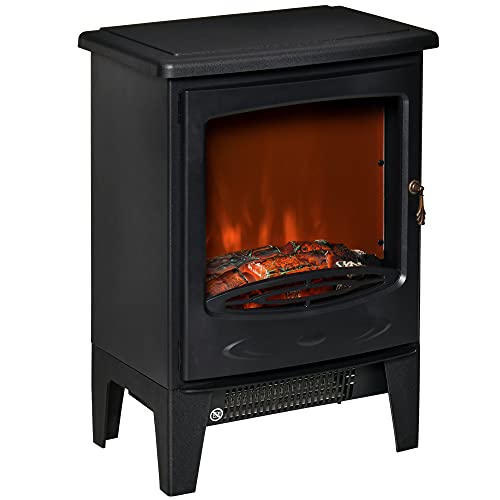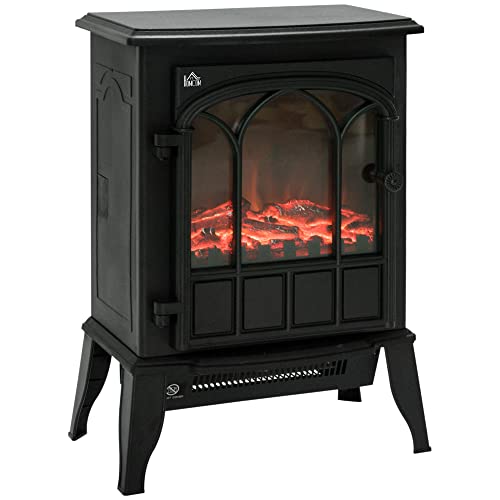The Most Significant Issue With Electric Heater And How You Can Fix It
페이지 정보

본문
 What You Need to Know About an Electric Heater
What You Need to Know About an Electric HeaterElectric heaters are a great way to provide a quick blast of warmth whenever you need it. They are typically rated according to the size of the room and include features like thermostats, overheat switches, and timers.
 An electric heater converts electrical energy into heat through joule heating. The heating element is made of the nichrome wire as well as ceramic insulators.
An electric heater converts electrical energy into heat through joule heating. The heating element is made of the nichrome wire as well as ceramic insulators.Resistor
The resistor is a component that reduces voltage and absorbs a portion of it in the form of heat. It works by converting electrical energy into thermal energy, and wasting only a fraction of a power. This process is present in a variety of fireplace electric stove light bulbs and heating components.
The thickness, material, and other properties of the resistor determine its resistance. The greater the resistance of the resistor the greater energy will be lost. This is due to higher currents leading to more electrons within the resistor, and more electrons mean more collisions between them. The more collisions occur, the higher the temperature.
In general, resistors have an maximum power rating they are able to safely dissipate typically between 1/8W (0.125W) and 1W. Resistors that have a high power rating can be recognized by their larger packaging. You can determine the maximum power rating by looking at the packaging or comparing it to other resistors with known power ratings.
Electric heaters are special kinds of power resistors designed to convert electricity into heat. They can generate convective heat by circulating air around the resistor or radiant heat by emitting infrared radiation. They are typically used in conjunction together with fans to increase the heating efficiency.
If a resistor's maximum power rating exceeds the power rating the resistor will heat up and can damage the components around it. In extreme instances, it may even become self-igniting and cause a fire. To prevent this, a limiting resistor is required to be incorporated into the circuit.
The color of the heater resistor is a code that indicates their worth along with other information like a manufacturing accuracy and temperature coefficient. A six-banded resistor, for example, will have five bands to indicate its digits, and the sixth band will provide the multiplier and tolerance. There are a variety of online calculators that you can use to calculate the value of your own resistor.
Coil
Electric heating coils form the basis of any electrically powered appliance that uses heat to warm objects or liquids. They convert electricity into heat through a process known as conduction, and they can be made into various shapes depending on the application. Electric heating coils are capable of producing a large amount of heat in a short amount of time which makes them ideal for applications that require quick temperature fluctuations or high levels of thermal efficiency.
The core of an electric fires stoves heating coil is a tightly wound structure composed of metal wires. This tightly packed structure allows for the most wires to be contained in an area of a smaller size, thus increasing conductivity. The coil can be protected in a variety ways, depending on its purpose. Insulation for Electric fire log Burner effect (nativ.media) heaters that is used in liquid immersion could be made out of a non-flammable plastic called polyvinylchloride (PVC), polyester or polyimide. A coil used in cryogenics will typically be insulated using molybdenum diilicide.
These materials are not only resistant to oxidation and corrosion, but also provide protection against the elements. This makes them suitable for a variety of industrial applications. Stainless steel is the most common element for a heater coil, but nickel-chrome and iron-chromium-aluminum alloys are also commonly used. These alloys have a great balance of cost, oxidation resistance and corrosion resistance.
Metals used in heating elements are exposed to extreme temperatures and harsh environments. They must be protected. This protection includes sealants and coatings, improved drainage and ventilation, regular maintenance, and inspections. Moisture ingress is a different problem that must be addressed because it can cause damage to the internal elements of a heater and reduce its life expectancy.
Coils can also be used in other equipments, including ovens and furnaces, as well as water tanks. They can be formed into a variety of shapes to suit the needs of the application and are typically printed on substrates like aluminum 6061-T6, muscovite, Phlogopite mica sheets or conductive plastic. They can be coated with different materials, including nickel, silver and gold to enhance their appearance.
Thermostat
You probably don't give it much thought but your thermostat is an important element of your home's comfort system. The primary function of a thermostat is to turn the heater ON and off so that it is able to maintain the temperature you prefer. It can also adjust the temperature according to your routine. This is ideal for those with an unpredictable schedule.
The most commonly used type of thermostat is the electronic, digital type which you can program with a smartphone app or computer interface. Many newer models even come with a learning feature that automatically adapts to your personal preferences so you don't have to wonder what time you should be home for dinner.
In the old thermostats that weren't digital the electrical circuit would be controlled by the bimetal coil or band that would expand or contract based on the temperature. When the strip expanded and contracted, a mercury switch tipped, activating the relay which turned on the heating. As the strip cooled down it bent backwards and snapped out from its original position. This shut off the heating.
Modern electric thermostats are more precise than electromechanical ones, utilizing an electronic temperature sensor and a small relay. It's still simple to comprehend the workings of an electromechanical thermostat through examining its components.
A thermometer coil that has a mercury piece inside is one of the most essential components. When you turn the thermostat lever upwards or downwards the coil turns and tilts the mercury switch in one direction or another. If the mercury switch is tilted to the left, it will trigger the relay and then switch on the heater.
As the room gets hotter, the mercury shifts to the right and interrupts the circuit which means that the heater is shut off. When the room cools down, the mercury returns back to its place of origin. The heater then turns on. If you continue to alter the temperature of your electric stoves fireplace thermostat, it could require overtime to keep up with your evolving preferences, which causes it to consume more energy than it is required to.
Timer
A wall heater timer is a useful device that lets you plan your lighting and heating. In contrast to traditional manual timers it is equipped with a built-in timer that will automatically activate and deactivate your lights or heaters at the time you set. It can also save you money on your day-to-day energy costs by preventing unnecessary use.
They are mostly utilized in homes however they are also found in industrial and commercial establishments. By controlling the timing of when circuits are turned off and off, they offer convenience, energy efficiency, and security. They can be connected to appliances like lights, water pumps, and ovens. They are a great option for those who wish to control electrical appliances without the use of computers or complicated programming.
You can set a timer by connecting it to an outlet or extension cord. Plug in the appliance that you wish to control. Depending on the model you can plug in several devices at the same time. Some models have the socket in the middle of the timer, while others have the socket either on the side or beneath it. There are several plug-in switches including those which can be controlled by a smartphone or tablet.
Most mechanical timers feature a dial with hour and half-hour marks. They also have small teeth that you can pull outward to set the "ON" time and push inward to set the "OFF" time. You can find models that have multiple sets. This lets you set the time for various days. Be aware that mechanical timers might not always function correctly, especially when their internal clock is slightly off. If your timer does not turn on or off when it should examine the wiring for any problems and make sure that all pins are properly inserted. If you can't fix it, it's best to seek help from an expert. Alternately, you can replace the timer with a fresh one. It is also recommended to keep the timer safe, away from pets and children.
- 이전글9 New Definitions About Seo Tools You do not Normally Need To listen to 25.01.08
- 다음글Why Electric Fire Stove Could Be Your Next Big Obsession 25.01.08
댓글목록
등록된 댓글이 없습니다.
